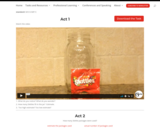
This three-act math task utilizes videos and questioning to help students explore multiplication and division within 1000.
- Subject:
- Mathematics
- Material Type:
- Activity/Lab
- Provider:
- GFletchy
- Author:
- Graham Fletcher
- Date Added:
- 10/25/2022

This three-act math task utilizes videos and questioning to help students explore multiplication and division within 1000.

This Flash game develops students' computational fluency and flexibility. It can be played alone or with others. Players choose 6 face-down number cards, and the applet provides a target number. Number cards include one each of 25, 50, 75, and 100, and multiple copies of 1 to 10. The goal is to use the selected numbers and the four basic operations (addition, subtraction, multiplication, division) to arrive at the target. Players can ask the applet to Show a Solution, although others may be possible. Several rule and scoring variations are suggested. A full screen option facilitates use on an interactive board. (This game is not self-checking.)
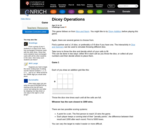
This collection of 6 games develops place value, operation sense and fluency, estimation, and strategic thinking. It is played on paper with a 6- or 9-sided die (printable pdf game sheets included). Players choose a game grid with empty cells representing the digits of a computation (addition, subtraction, multiplication, or division). They take turns rolling a die and placing the resulting number in a cell on their own grids. The goal is to create a sum/difference/product/quotient that is closest to a target number. Variations include using a decimal point and scoring options. Teachers' Notes include suggestions for introducing the game, discussion questions, support suggestions, and a link to a more challenging extension (Countdown, cataloged separately).
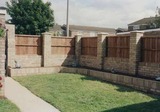
The purpose of this task is to explore multi-digit multiplication and lead to students discovering the distributive property.
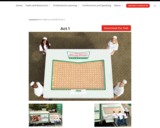
This three-act math task utilizes videos and questioning to help students explore multiplication and division beyond 1000.
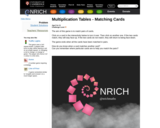
This interactive Flash version of the familiar Concentration game ("pelmanism" in the UK) helps a single user practice multiplication facts while developing memory and concentration skills. The player can choose an array of 16, 20, or 24 cards, which appear face down. The goal is to flip two cards at a time to match all the pairs of factors with their products as efficiently as possible. A scoring feature discourages random guessing. Users can choose to work with factors in three ranges: 2x-10x, 2x-21x, or 11x-21x. Printable versions of the game cards are available to download.
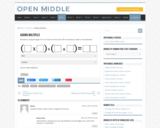
Open Middle tasks provide opportunities for student to approach a mathematical task using different strategies and representations. They can be used as a warm-up/closing activity, as a formative assessment, or to facilitate discourse and discussion and get insite into student thinking and problem solving. These tasks provide a great opportunity for student to engage with the Standards for Mathematical Practice.
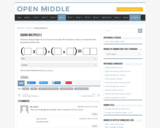
Open Middle tasks provide opportunities for student to approach a mathematical task using different strategies and representations. They can be used as a warm-up/closing activity, as a formative assessment, or to facilitate discourse and discussion and get insite into student thinking and problem solving. These tasks provide a great opportunity for student to engage with the Standards for Mathematical Practice.
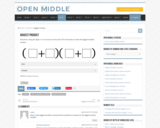
Open Middle tasks provide opportunities for student to approach a mathematical task using different strategies and representations. They can be used as a warm-up/closing activity, as a formative assessment, or to facilitate discourse and discussion and get insite into student thinking and problem solving. These tasks provide a great opportunity for student to engage with the Standards for Mathematical Practice.
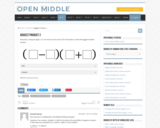
Open Middle tasks provide opportunities for student to approach a mathematical task using different strategies and representations. They can be used as a warm-up/closing activity, as a formative assessment, or to facilitate discourse and discussion and get insite into student thinking and problem solving. These tasks provide a great opportunity for student to engage with the Standards for Mathematical Practice.
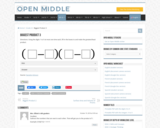
Open Middle tasks provide opportunities for student to approach a mathematical task using different strategies and representations. They can be used as a warm-up/closing activity, as a formative assessment, or to facilitate discourse and discussion and get insite into student thinking and problem solving. These tasks provide a great opportunity for student to engage with the Standards for Mathematical Practice.
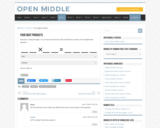
Open Middle tasks provide opportunities for student to approach a mathematical task using different strategies and representations. They can be used as a warm-up/closing activity, as a formative assessment, or to facilitate discourse and discussion and get insite into student thinking and problem solving. These tasks provide a great opportunity for student to engage with the Standards for Mathematical Practice.
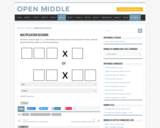
Open Middle tasks provide opportunities for student to approach a mathematical task using different strategies and representations. They can be used as a warm-up/closing activity, as a formative assessment, or to facilitate discourse and discussion and get insite into student thinking and problem solving. These tasks provide a great opportunity for student to engage with the Standards for Mathematical Practice.

Open Middle tasks provide opportunities for student to approach a mathematical task using different strategies and representations. They can be used as a warm-up/closing activity, as a formative assessment, or to facilitate discourse and discussion and get insite into student thinking and problem solving. These tasks provide a great opportunity for student to engage with the Standards for Mathematical Practice.
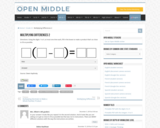
Open Middle tasks provide opportunities for student to approach a mathematical task using different strategies and representations. They can be used as a warm-up/closing activity, as a formative assessment, or to facilitate discourse and discussion and get insite into student thinking and problem solving. These tasks provide a great opportunity for student to engage with the Standards for Mathematical Practice.
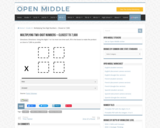
Open Middle tasks provide opportunities for student to approach a mathematical task using different strategies and representations. They can be used as a warm-up/closing activity, as a formative assessment, or to facilitate discourse and discussion and get insite into student thinking and problem solving. These tasks provide a great opportunity for student to engage with the Standards for Mathematical Practice.
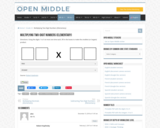
Open Middle tasks provide opportunities for student to approach a mathematical task using different strategies and representations. They can be used as a warm-up/closing activity, as a formative assessment, or to facilitate discourse and discussion and get insite into student thinking and problem solving. These tasks provide a great opportunity for student to engage with the Standards for Mathematical Practice.
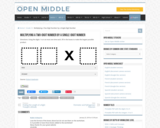
Open Middle tasks provide opportunities for student to approach a mathematical task using different strategies and representations. They can be used as a warm-up/closing activity, as a formative assessment, or to facilitate discourse and discussion and get insite into student thinking and problem solving. These tasks provide a great opportunity for student to engage with the Standards for Mathematical Practice.

This three-act math task utilizes videos and questioning to help students explore multiplication and division within 1000.